Description
Description: Chinese plain white “Blanc de Chine” snuff bottle, Dehua ware. It is molded in the form of a standing up elephant, turning his head back, with a saddlecloth and howdah, the latter forming the neck of the bottle. All the old known elephant snuff bottles of standard porcelain, which are not common, are of the type seen in the antepenultimate and penultimate pictures. All them are shaped as a recumbent elephant, and are polychrome enameled. Being not common, they are fetching high prices at the major auction houses. Our bottle is the only one that we are aware of that is molded in standup position and made in Blanc de Chine. It has the elephant’s trappings and even the nails of the feet incised underglaze, which are difficult to see in pictures because of the white color. We believe that it is purposely made in Dehua plain white for evidencing the original, contrasting red coral and celadon color jade stopper. The title of this bottle is just for evidencing the stopper, which is old and we judge to be original, thus pointing toward an early date for this bottle, also considering what is said by Sotheby’s in the Catalogue Note of the bottle of the antepenultimate picture, which main point we are resuming:
“A good many moulded porcelain bottles from the mid-Qing period are of animal, vegetable, or figural forms, and many of these were not reign marked. Several of them would have been inventions of the late Qianlong, and this elephant is likely to be one of them, although an early Jiaqing date is equally plausible. Because of their auspicious symbolism, elephants were moderately common subjects in the Qing palaces. They are known from the eighteenth century in nephrite and from late in the Qianlong reign in imperial yellow glass; it seems highly unlikely that the emperor would not have thought of moulding them in porcelain the moment the art form evolved to the point of producing free-standing animal forms. Nothing about the enamels or modelling here would preclude a late-Qianlong date.”
In the penultimate picture there is another bottle of that type, sold by Christie’s. Here too it is interesting what is said in the Catalogue note:
“This is a superb example of one of the earliest animal molds known. Several molds were used during the same period with slight variations. Bottles from two different molds are illustrated in Chinese Snuff Bottles from the Fernhill Park Collection, no. 3, and in Chinese Snuff Bottles No. 6, p. 41, C38, from the Marquess of Exeter Collection. There is another very close in form but from a different mould in Passion Mandchoue. Flacons a Tabac, p. 35. In most cases, the elephant is left without enamels, as the white elephant is an auspicious Buddhist symbol.”
The last sentence is mentioning that white elephants are an auspicious Buddhist symbol for peace. Since the descriptions of both these bottles are talking about the molds used for that type of porcelain bottles, it is worth to mention that our bottle has the four legs molded separately and then attached to the molded body.
As said in the title, our bottle is exceedingly rare. The last picture is showing a Dehua exceptionally well-molded snuff bottle sold by Bonhams, where, in the Footnotes, it is said that it is one of the only two Dehua snuff bottles known. Our one is the third one.
Mark:
Dating: First half of 19th century, dating based on what is said in the above Description, the good provenance and the original, well carved stopper.
Material: Dehua porcelain.
Size: 45 mm high
Stopper: Red coral carved stopper with celadon color jade collar and stained bone spoon. Original.
Provenance: Ex Sergia Iessi collection. About this collector, see the hornbill bottle O35 in the “Organic” section.
References: No standing up Dehua elephant bottles found at the date. Only two other Dehua snuff bottles known, see the last picture.
Notes:
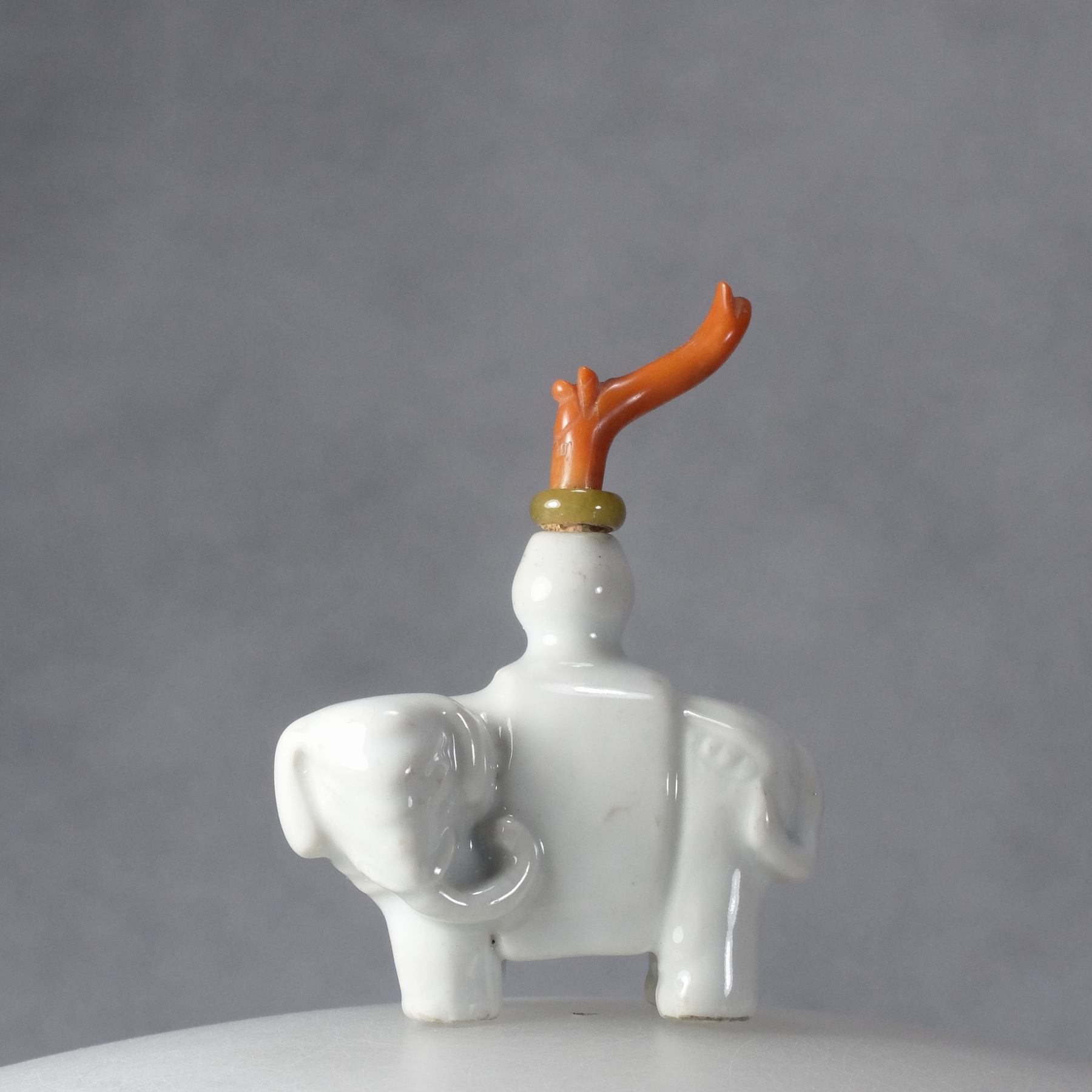
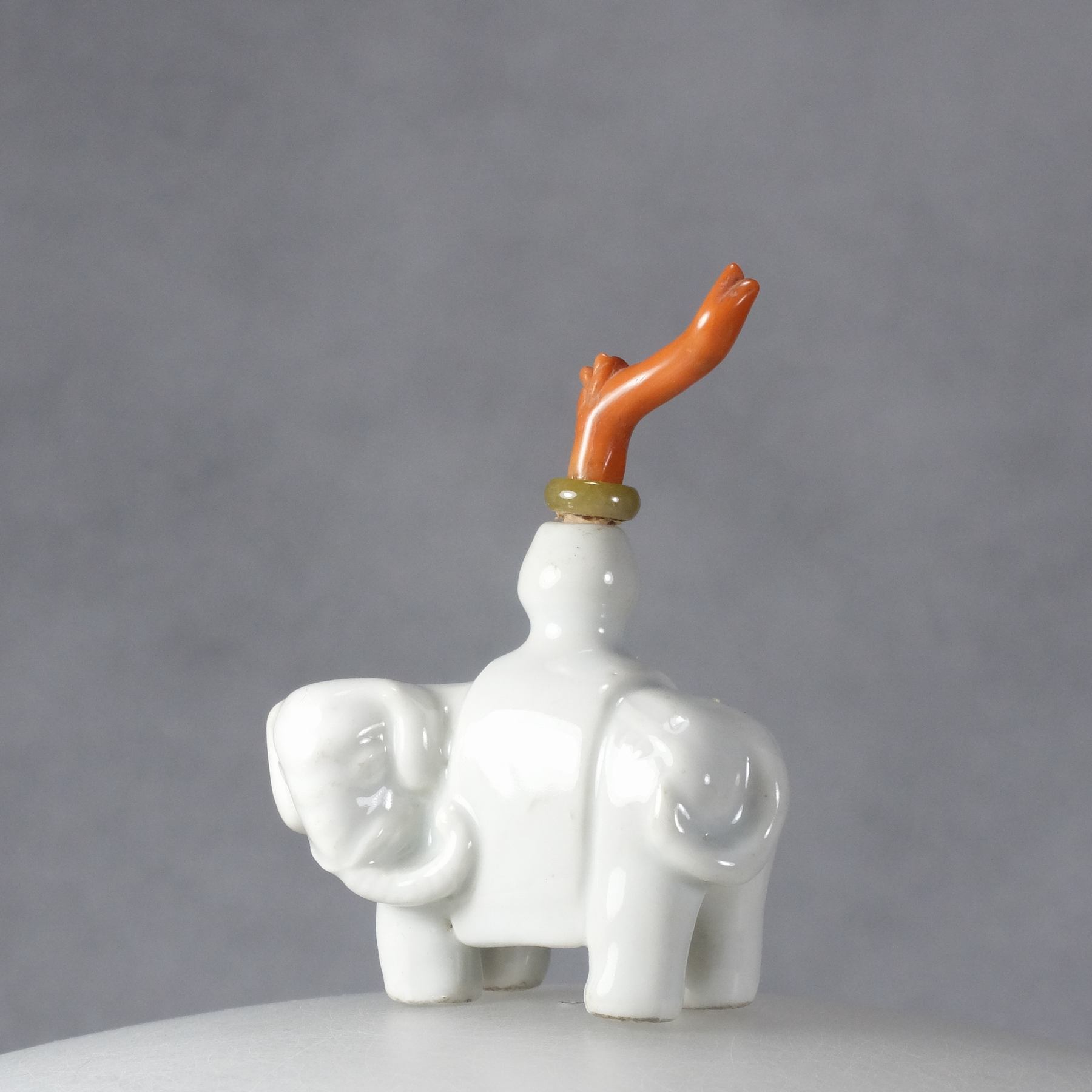
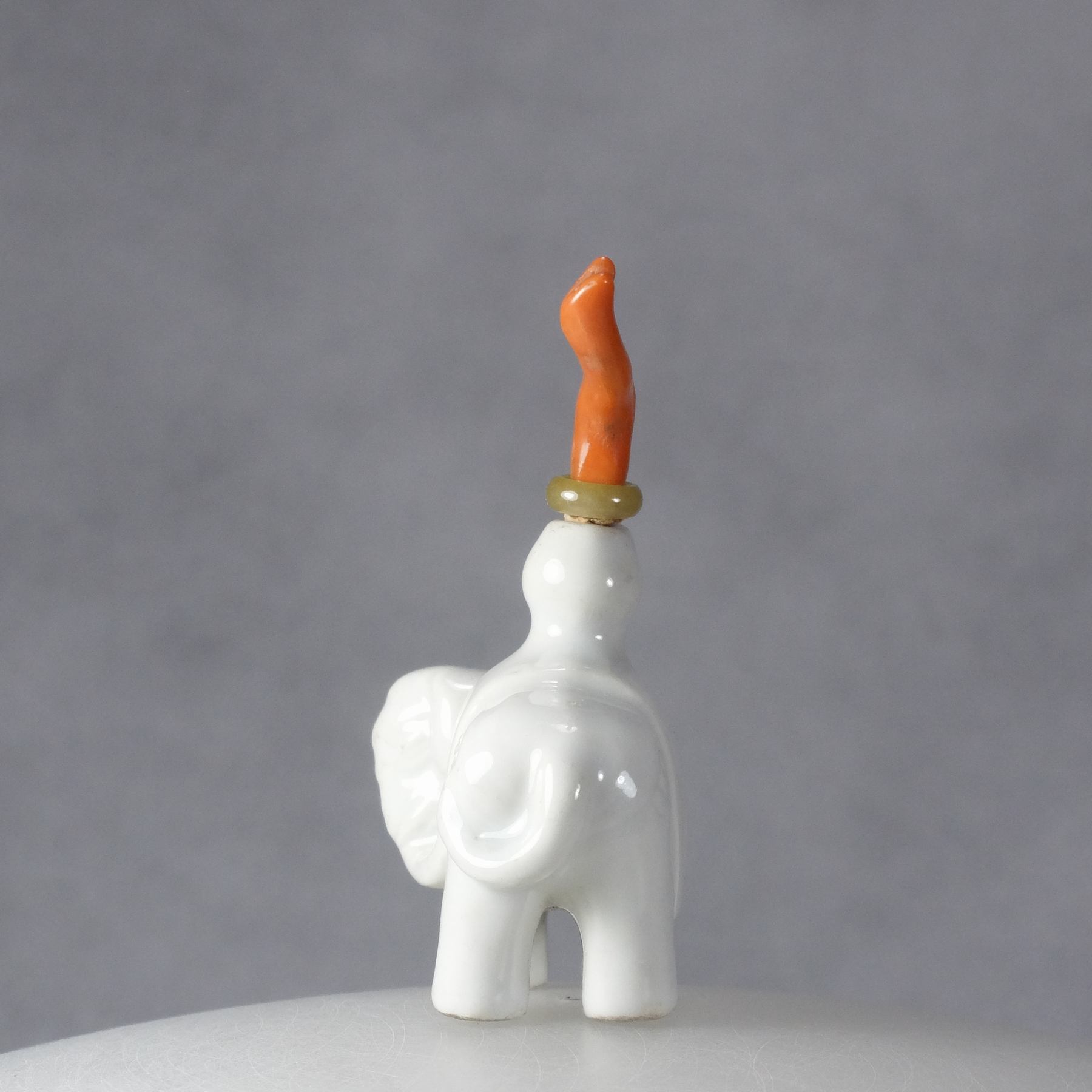
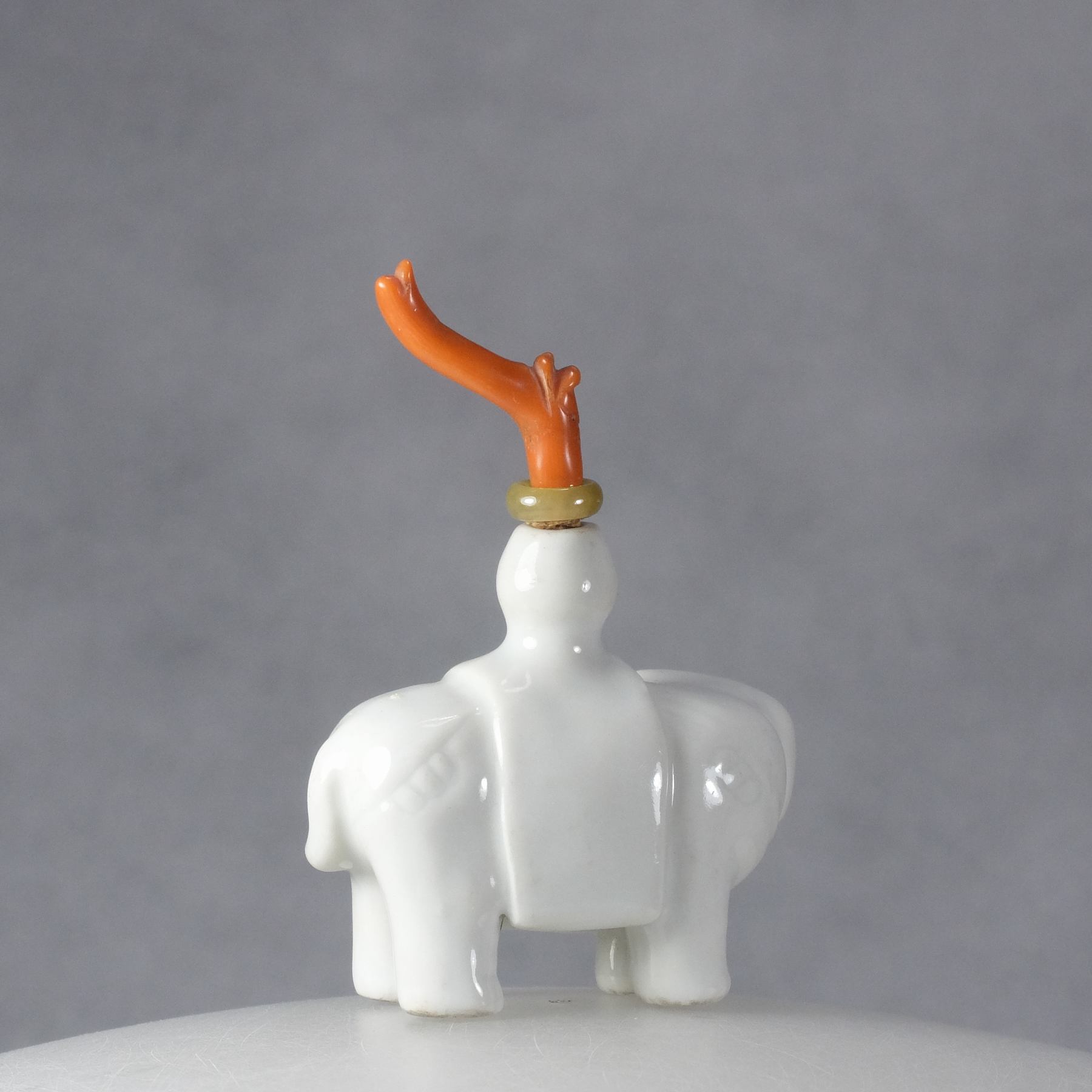
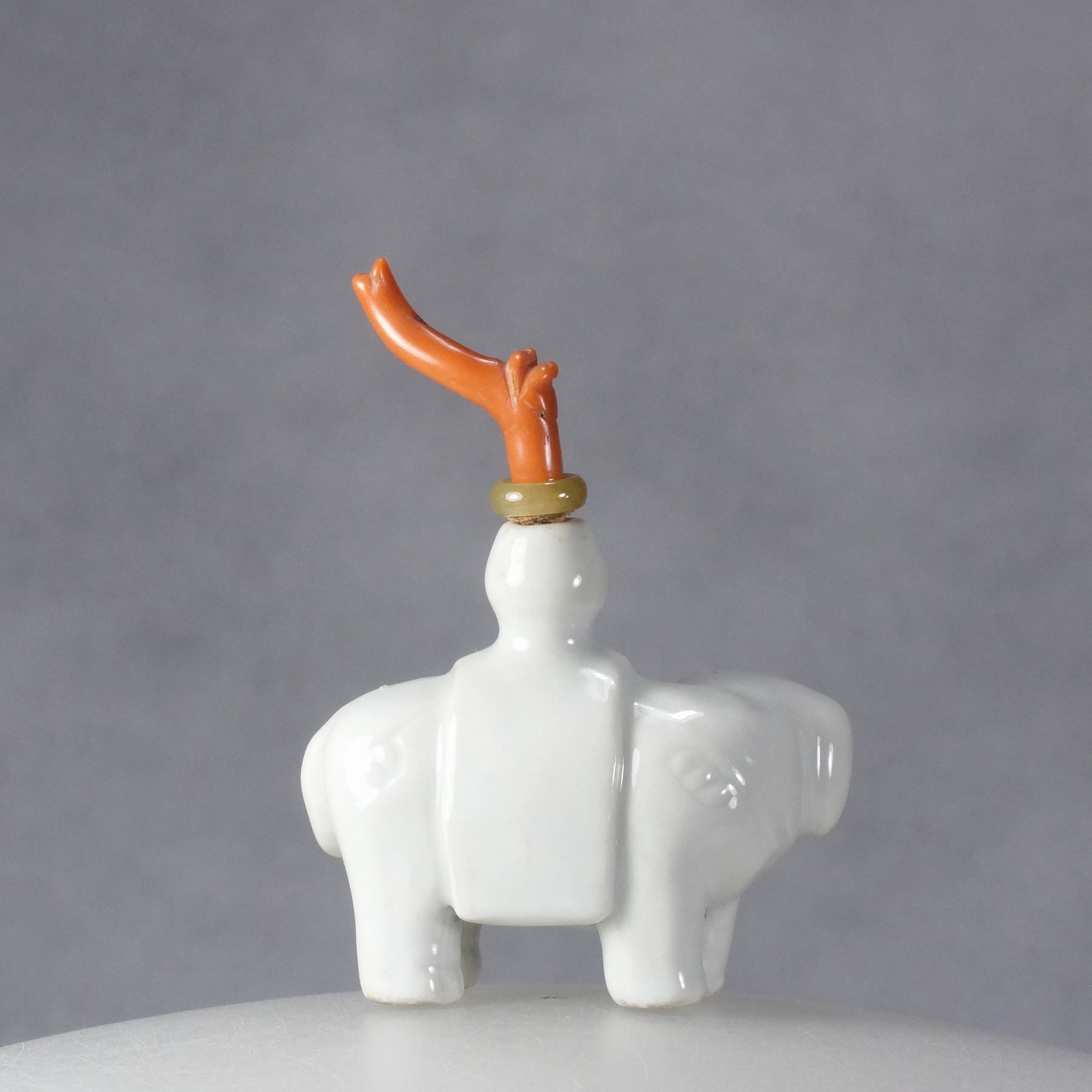
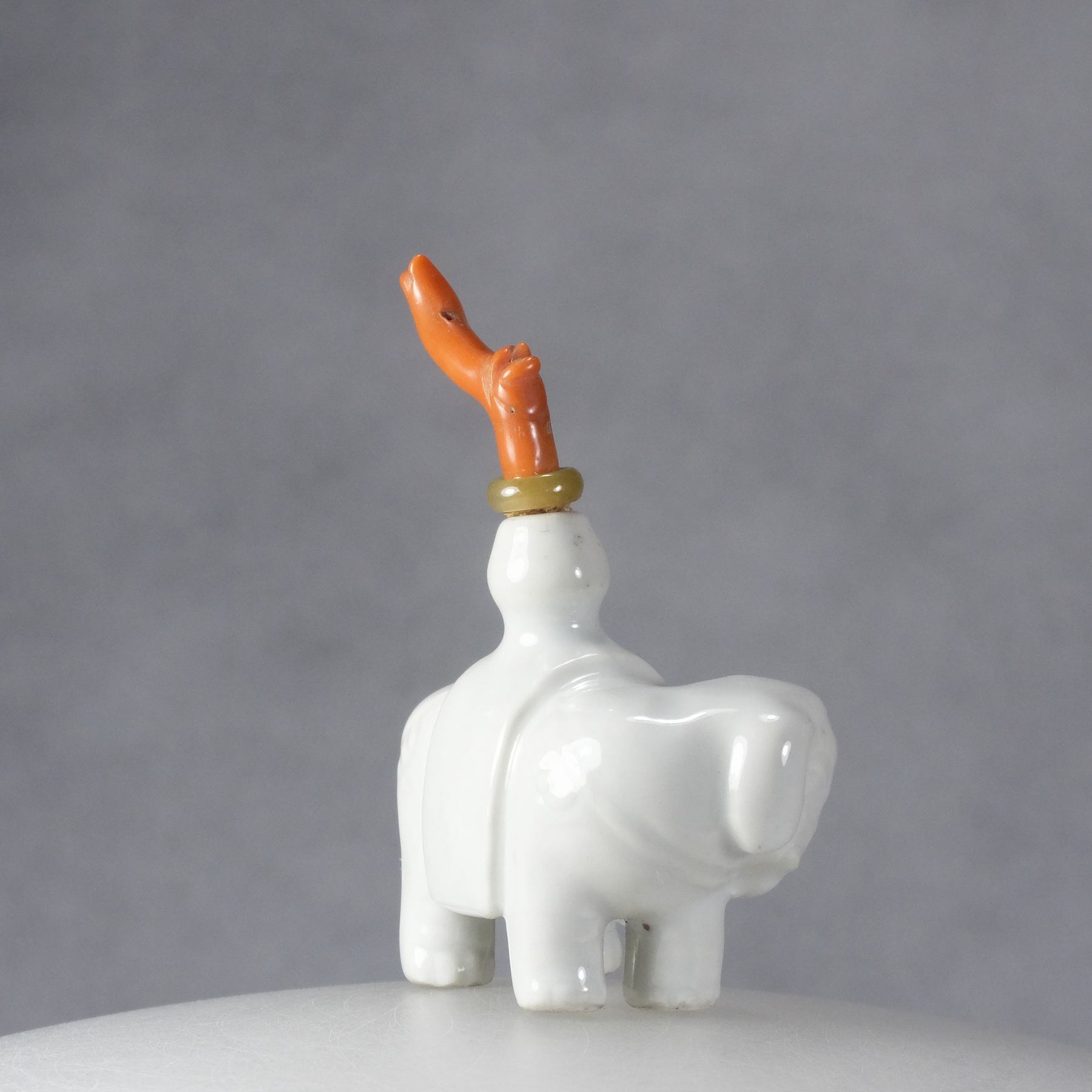
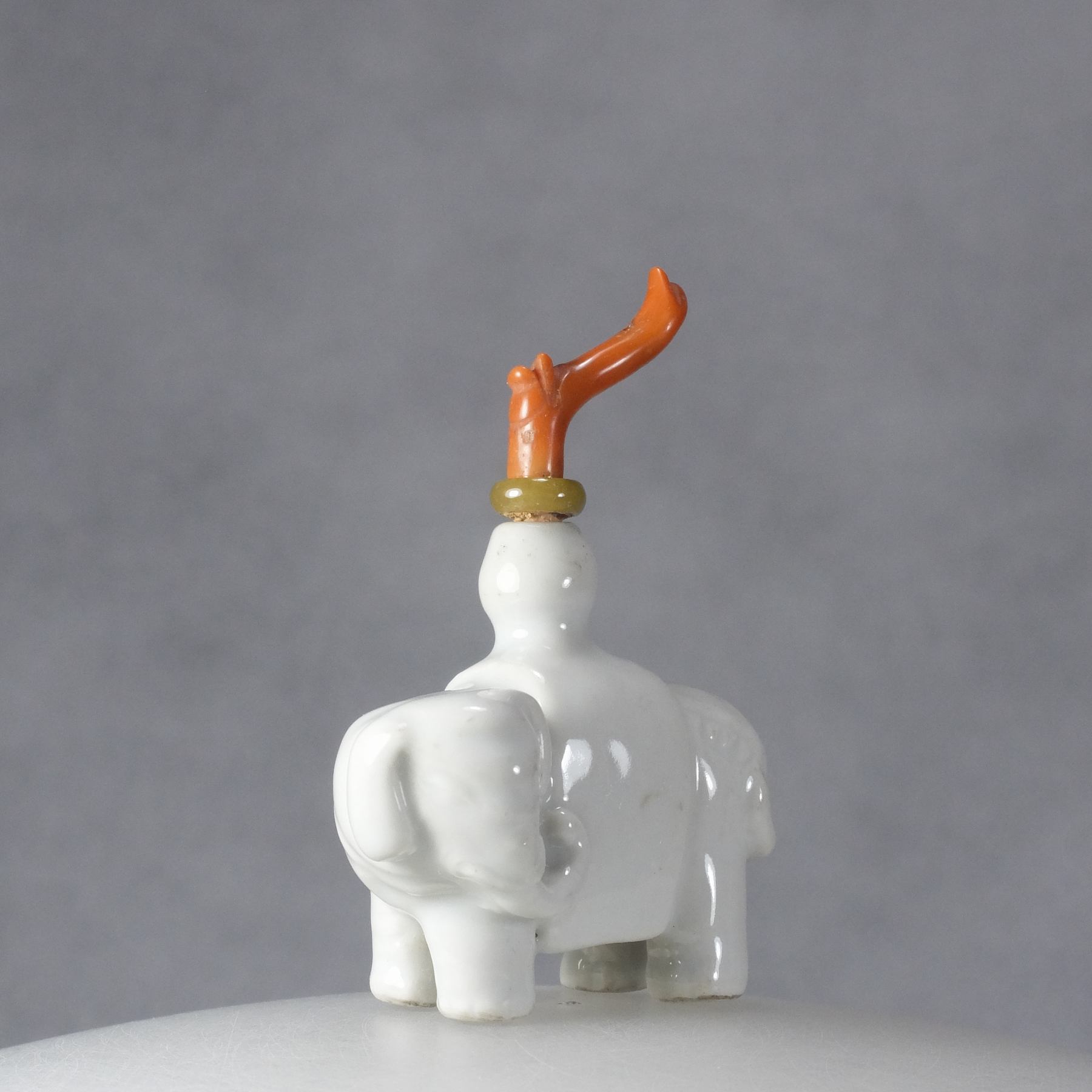
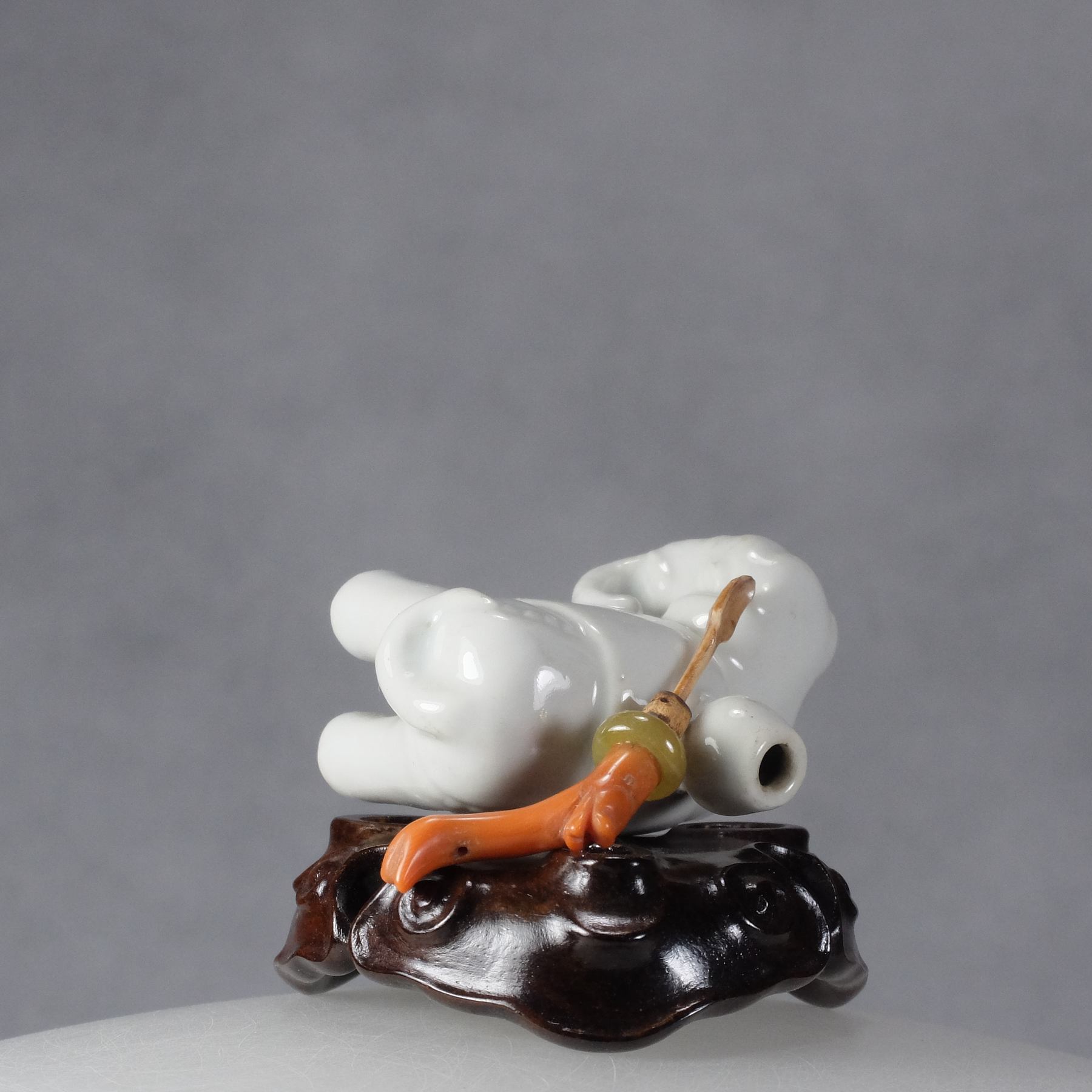
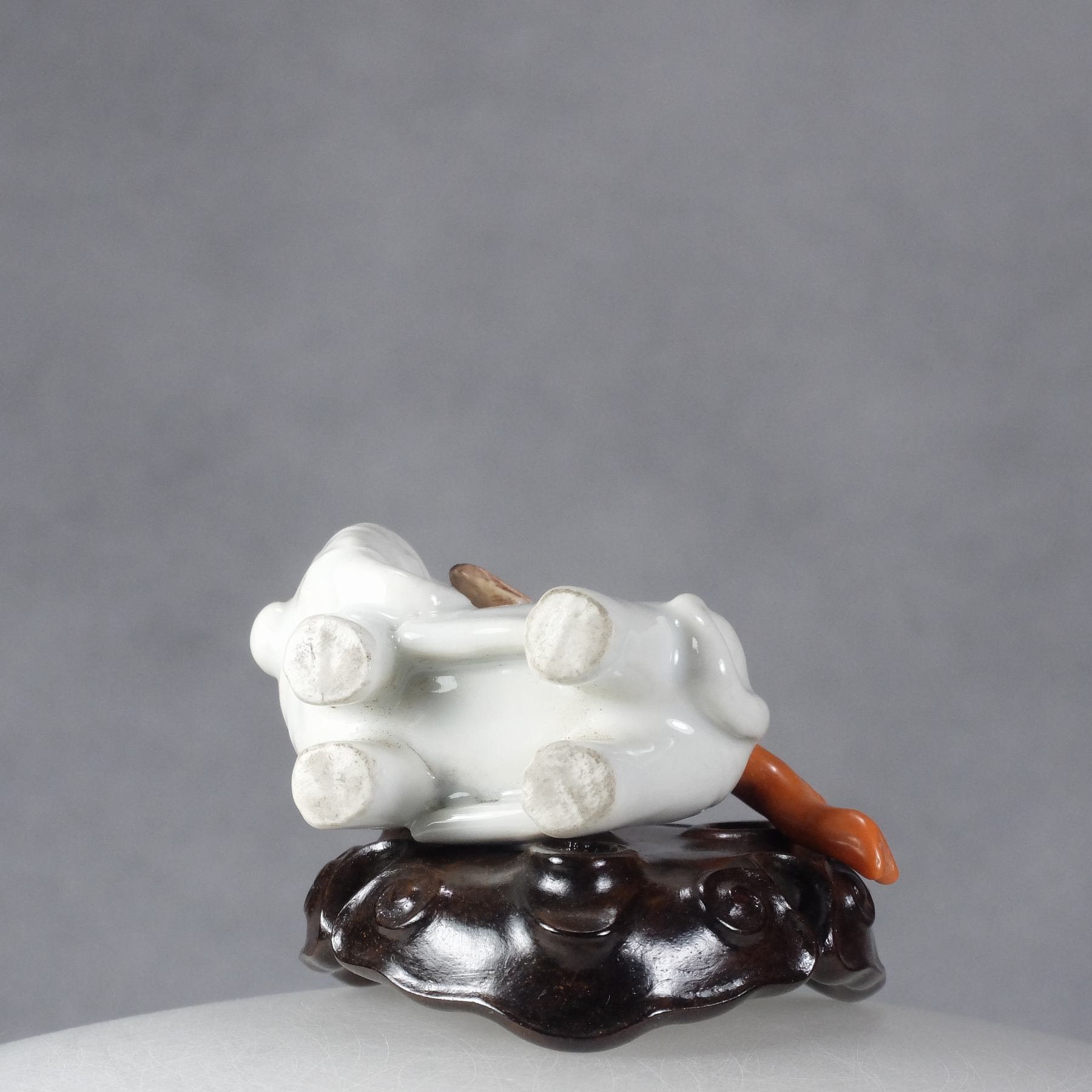
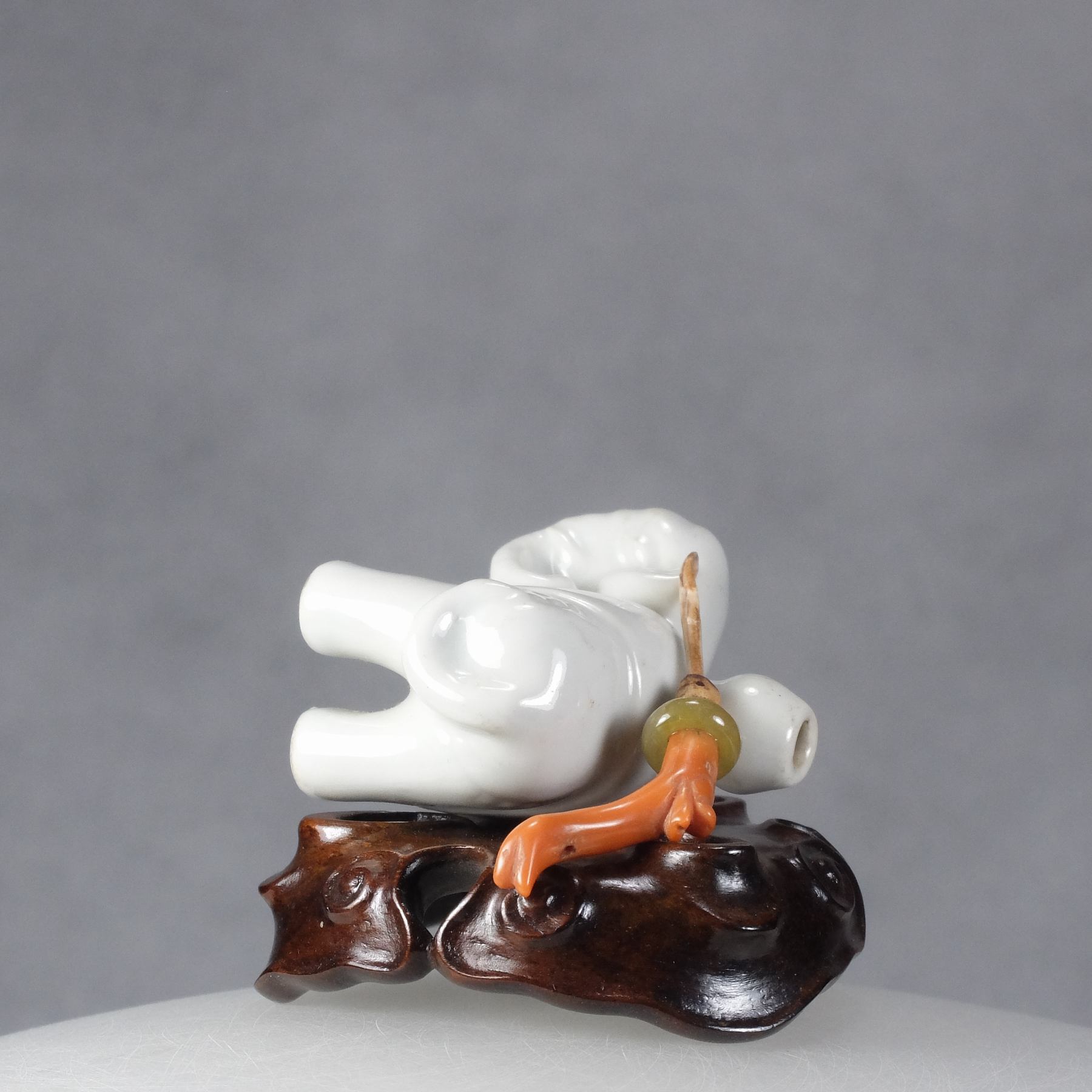
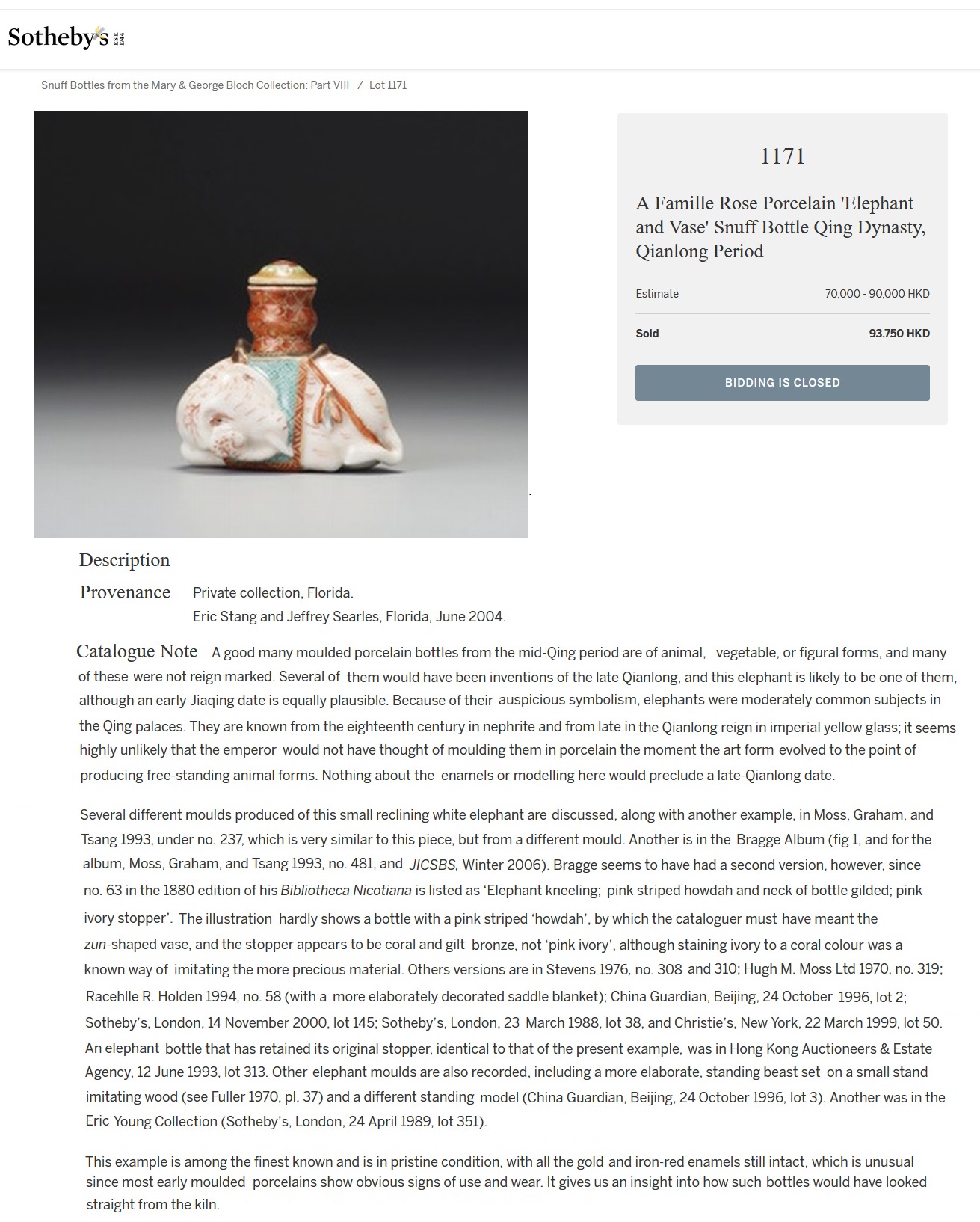
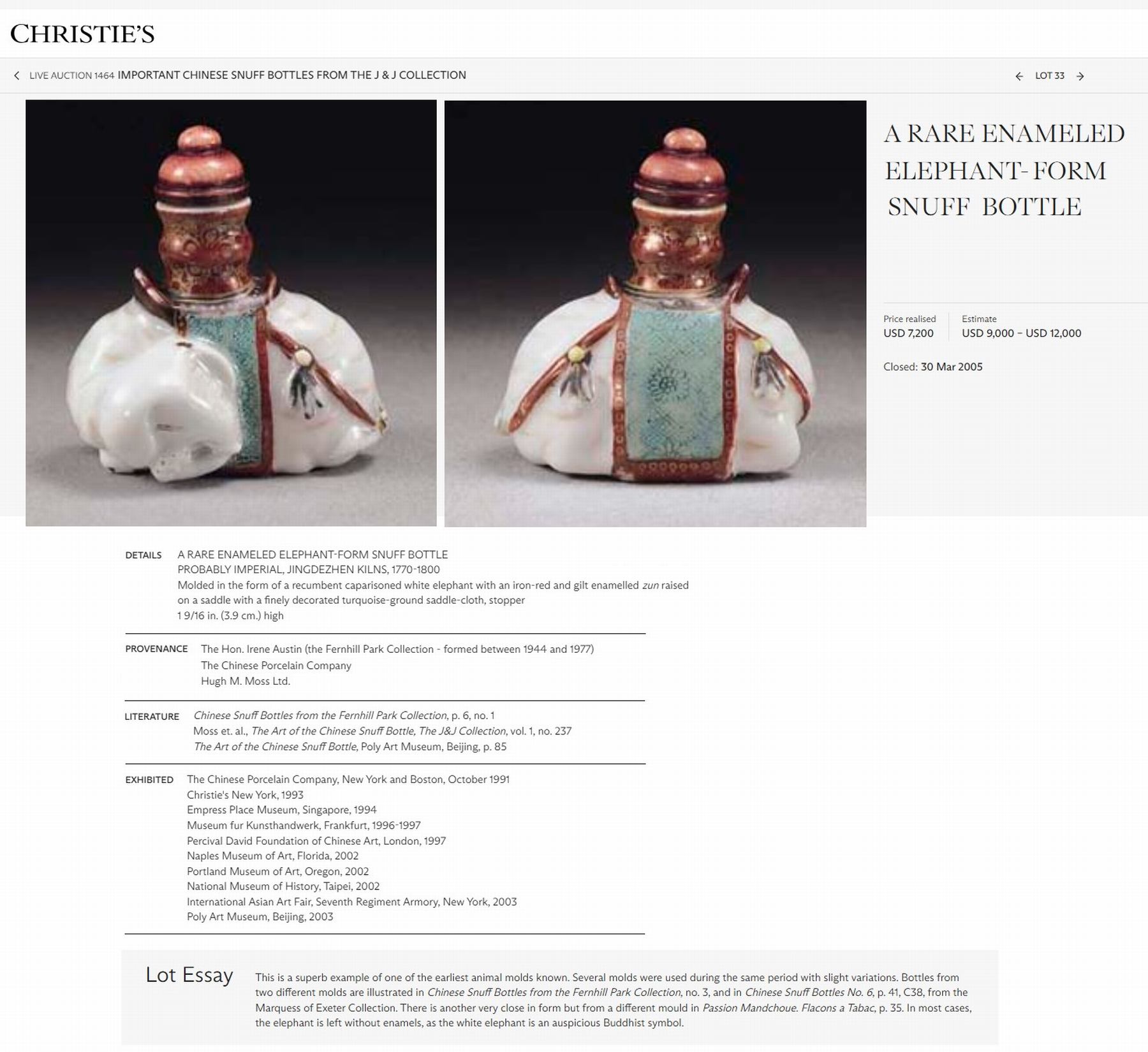
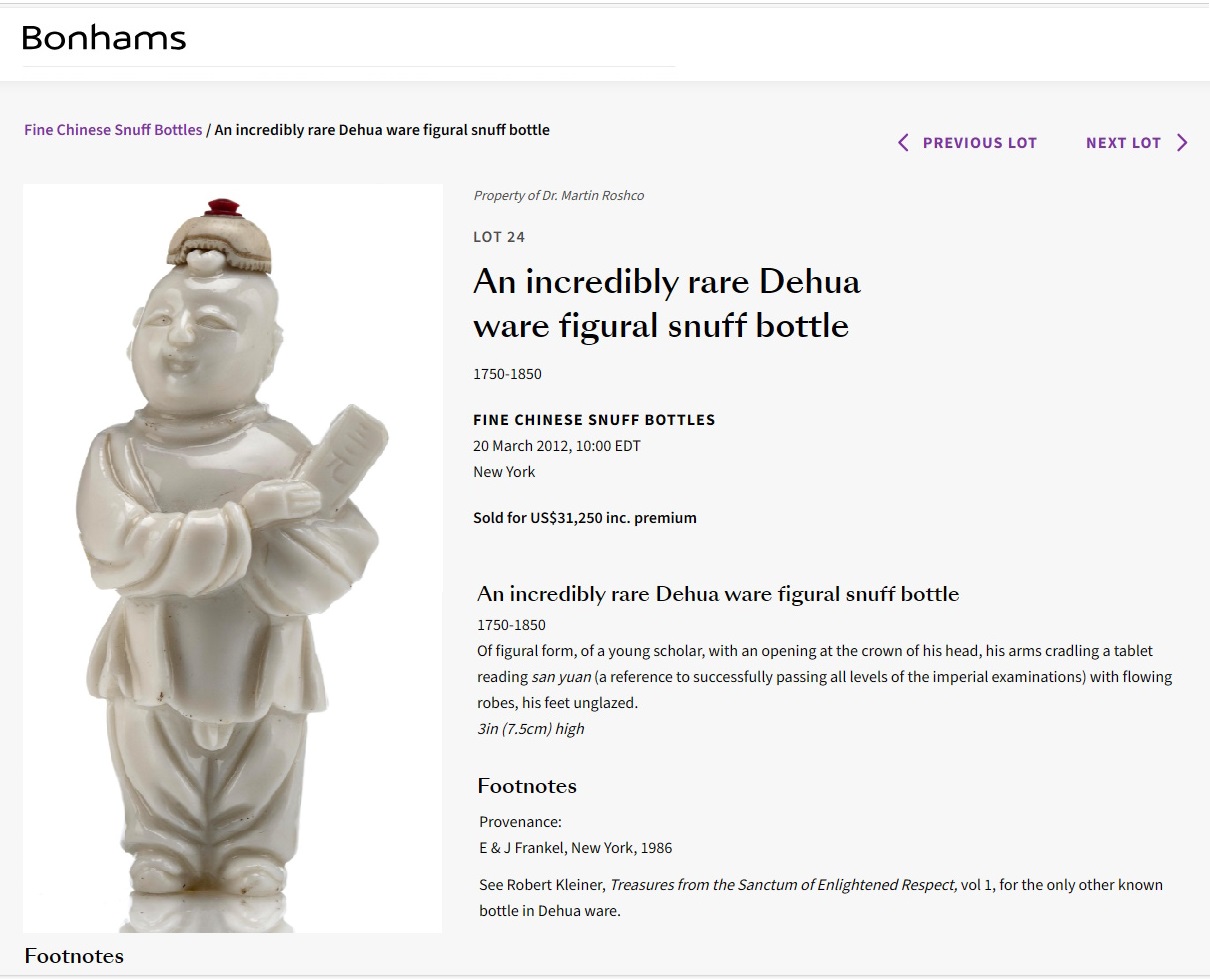
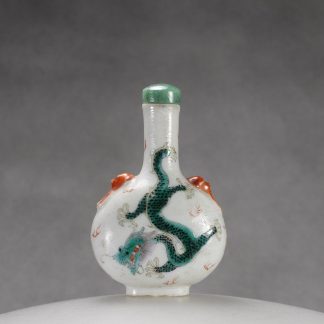


Reviews
There are no reviews yet.